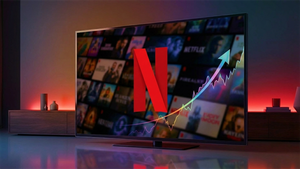Last month, we spoke with a marketing director at a major consumer goods brand who was drowning in retail media complexity. "I spend half my day just trying to figure out which platform to blame for our terrible return on ad spend," she confessed. "Amazon DSP shows 4.2x ROAS, Walmart Connect claims 3.8x, but when I look at our actual sales numbers, nothing adds up. It's like every platform lives in its own universe."
She's not alone. Despite retail media's explosive growth trajectory—projected to reach a staggering $166 billion in 2025, up from just $46 billion in 2023—marketers are discovering that success in this channel requires navigating a labyrinth of operational nightmares and strategic pitfalls that make traditional digital advertising look simple by comparison.
The promise is intoxicating. Platforms like Amazon DSP, Walmart Connect, Instacart Ads, Target, Kroger, and specialized retailers like Chewy's offer unprecedented targeting precision using first-party purchase data. The reality? Most brands find themselves trapped in a system where the house always wins, and achieving consistent ad performance feels like solving a puzzle where someone keeps changing the rules.
The fundamental power shift that changed everything
Here's what happened: retailers got tired of being middlemen. They looked at their first-party data goldmine—every search, every click, every purchase—and realized they were sitting on advertising's holy grail while watching Google and Facebook print money. So they decided to become media companies themselves.
"It's like letting the referee play for one of the teams," observes Scott Reinders, COO of Connect, and his analogy cuts to the heart of retail media's biggest problem. Retailers now simultaneously serve as marketplace gatekeepers, data custodians, advertising platforms, and increasingly, direct competitors to the brands paying for ads.
This isn't your typical conflict of interest. Amazon doesn't just sell ads—it uses advertiser-funded data to identify successful products for its private-label development. That supplement brand is spending thousands on Amazon DSP? Their performance data might inform Amazon's next AmazonBasics product launch. Walmart Connect doesn't just provide targeting capabilities—it can strategically promote Great Value products over national brands, even when those brands are paying premium prices for placement.
The power imbalance extends beyond data usage. Brands quickly discover that retail media participation isn't really optional if they want to maintain favorable relationships with these retailers. Reduce your ad spend on Target's platform, and you might find your products mysteriously getting less favorable shelf placement. Skip Kroger's media opportunities, and suddenly your promotional calendar negotiations become more difficult.
Consider what this means for ROAS calculations. Traditional advertising allows brands to optimize purely for performance—if Facebook ads aren't delivering, you shift budget to Google. In retail media, pulling budget from an underperforming platform risks damaging your entire supplier relationship with that retailer. You're not just optimizing for ad efficiency; you're managing a complex web of commercial dependencies.
The fragmentation nightmare that's driving marketers insane
If you think managing Google and Facebook campaigns is complex, try running campaigns across Amazon DSP, Walmart Connect, Instacart Ads, Target, Kroger, and Chewy's simultaneously. Each platform operates like an independent country with its own language, currency, and customs.
Amazon DSP requires a deep understanding of sponsored product campaigns, keyword bidding strategies, and their complex attribution models. Walmart Connect operates with entirely different auction dynamics, creative specifications, and optimization approaches. Target's advertising ecosystem emphasizes different metrics and requires separate expertise. Instacart Ads focuses heavily on basket-building and immediate purchase intent with its own unique measurement philosophy. Kroger's platform prioritizes different customer touchpoints, while Chewy's specialized audience demands pet-specific optimization strategies.
The knowledge transfer between platforms is essentially zero. Becoming an expert on Amazon DSP tells you nothing about succeeding on Walmart Connect. Master Instacart Ads, and you're still starting from scratch when you tackle Target's system. Each platform requires months of experimentation to achieve basic competency, and just when marketers think they've figured things out, algorithm updates reset their expertise.
The operational overhead is staggering. A marketing team managing five retail media networks needs separate campaign setups, different creative assets with varying specifications, distinct keyword research for each platform's search behavior, independent budget management systems, and completely different optimization strategies. It's like speaking five different languages fluently while simultaneously solving separate complex mathematical equations.
This fragmentation forces difficult strategic choices. Do you spread resources thin across multiple platforms and achieve mediocre ad performance everywhere? Or do you concentrate on a few networks and accept that you're missing opportunities? Most brands end up with a patchwork approach that satisfies no one and optimizes nothing.
The pricing opacity that makes budget planning impossible
Here's where retail media gets really frustrating: pricing that feels designed to prevent meaningful comparison or optimization. Unlike Google or Facebook, where auction dynamics create transparent, market-driven pricing, retail media operates more like an exclusive nightclub where the cover charge changes based on who's asking.
"Without competition or industry benchmarks, it's a 'take it or leave it' scenario for many brands," explains Reinders. Retailers bundle advertising opportunities with complex arrangements that might include premium homepage placements, sponsored product positions, display advertising, in-store promotional elements, and mysterious "optimization fees" that appear without explanation.
Try calculating accurate return on ad spend when one retailer charges $15 CPM for search placements while another charges $22 CPM for seemingly identical inventory. Add seasonal pricing fluctuations that can increase costs by 300-500% during peak periods, and budget planning becomes nearly impossible. The marketing director I mentioned earlier spent three months trying to understand why her Amazon DSP costs doubled between October and November, only to discover buried seasonal multipliers that no one had explained.
Smaller brands face even starker realities. "Retailers can only really extract value from major brands. For challenger brands, covering normal rebates, listings, and promotions is all we can do," explains Paul Raphaely, director at food brand NOMU. When retailers suggest $50,000 media packages, he often has "no choice but to say, 'Maybe later.' It's too expensive, and offers nothing unique to us."
This pricing dynamic creates a vicious cycle. Only large brands with substantial budgets can afford meaningful retail media participation, which gives retailers less incentive to improve transparency or efficiency. Smaller brands get priced out, reducing competitive pressure on retail media networks to justify their costs or improve ad performance.
The data prison that makes optimization nearly impossible
Perhaps the most strategically damaging aspect of retail media complexity is what I call the "data prison"—each platform jealously guards customer information and provides reporting only within its own ecosystem. This creates information silos that make calculating true return on ad spend nearly impossible and prevent the kind of holistic optimization that drives advertising efficiency.
"Retailers might provide basic metrics like impressions and clicks but withhold granular sales attribution data," explains Reinders. "This makes it hard for brands to calculate true ROI." The limitation extends far beyond simple performance metrics. Marketers cannot understand customer journey patterns across platforms, implement sophisticated attribution modeling, or even prevent over-exposing customers to the same advertisements across multiple networks.
Picture this common scenario: a customer searches for protein powder on Amazon, clicks a sponsored ad, researches the brand's products, then compares prices on Target's website, reads reviews on Walmart, and ultimately purchases through Instacart Ads while grocery shopping. Amazon DSP claims credit for the conversion using its attribution model. Target counts it as influenced traffic. Walmart might include it in brand awareness metrics. Instacart Ads gets the last-click attribution. The brand pays all four platforms while having no idea which actually drove the sale.
This attribution chaos makes meaningful ROAS optimization impossible. Marketers find themselves drowning in disconnected spreadsheets, manually attempting to aggregate ad performance data from dozens of sources. They're flying blind, making budget allocation decisions based on incomplete information while each platform insists its numbers tell the complete story.
The customer journey complexity intensifies when considering cross-device behavior. Customers research on mobile, compare on desktop, and purchase in-store or through apps. Understanding how retail media advertising influences these journeys requires cross-device tracking capabilities that simply don't exist when platforms operate in isolation.
The technical maze that prevents scaling
Managing retail media campaigns isn't just operationally complex—it's technically nightmarish. Each platform has unique API structures, data formatting requirements, and automation capabilities that make building unified management systems extraordinarily difficult.
While Amazon DSP offers relatively robust automation tools, many retail networks provide limited API access or require manual campaign management. This inconsistency means marketing teams cannot apply standardized workflows across their retail media portfolio, creating operational inefficiencies that prevent achieving optimal ad efficiency.
The definitional chaos around metrics compounds technical challenges. Amazon DSP might measure return on ad spend using a 14-day attribution window while including subscription sign-ups in conversion calculations. Walmart Connect could report ROAS with a 7-day window focusing purely on immediate purchases. Target might measure success through incremental lift studies. Instacart Ads emphasizes basket impact metrics. Comparing performance across these platforms becomes meaningless when everyone uses different math.
This is where technology solutions like RMIQ become essential. RMIQ is an AI-powered cross-retail media network ad performance and campaign management platform that addresses the fragmentation nightmare by providing unified campaign management across multiple retail networks. Instead of managing separate dashboards for Amazon DSP, Walmart Connect, Target, Kroger, Instacart Ads, and Chewy's, brands can use RMIQ's artificial intelligence to optimize campaigns automatically while providing standardized reporting that makes meaningful performance comparison possible.
The platform's AI-driven approach enables automated budget reallocation based on real-time performance data across all networks, identifies optimization opportunities that human managers might miss, and provides the kind of cross-platform insights that have been historically impossible to achieve. For brands managing campaigns across dozens of retail networks, RMIQ's technology can mean the difference between profitable growth and drowning in operational complexity.
The inventory scarcity that limits scaling
Unlike Google or Facebook, which can theoretically create unlimited advertising inventory, retail media networks have finite inventory tied to their specific customer traffic patterns. Premium placements—homepage carousels, search result sponsorships, category page takeovers—cannot be expanded regardless of advertiser demand or willingness to pay for improved ad performance.
This scarcity creates intense competition that varies dramatically across platforms and seasons. A pet supplement brand might find abundant, affordable inventory on Amazon DSP but face prohibitive costs on Target's general retail platform. However, that same brand could discover that Chewy's specialized pet audience offers superior ROAS at reasonable costs, but with extremely limited scale potential.
Seasonal inventory fluctuations compound planning challenges. During peak shopping periods like Black Friday or back-to-school seasons, inventory costs can increase 300-500% while availability simultaneously decreases. Marketers must constantly adjust strategies based on inventory availability rather than pure performance optimization, making consistent ad efficiency nearly impossible to maintain.
Successful campaigns cannot simply be scaled by increasing budgets like traditional digital advertising. A campaign generating excellent return on ad spend might hit inventory ceilings where additional investment doesn't translate to proportional reach increases because maximum available inventory has been purchased.
How smart brands are fighting back
Despite overwhelming complexity, sophisticated brands are developing strategies to navigate retail media more effectively while protecting their interests and maximizing return on ad spend.
The most successful approach involves building comprehensive commercial partnerships that extend beyond simple advertising relationships. Smart brands negotiate media packages as part of broader trade deals, bundling advertising spend with promotional support, inventory commitments, and category management partnerships. This approach provides leverage in pricing negotiations and reduces vulnerability to arbitrary treatment that might impact ad performance.
Data-driven brands are pushing back aggressively by demanding clearer performance metrics, ROAS guarantees, and greater transparency in pricing and inventory allocation. "The more data-driven brands become, the better they can justify—or challenge—the spend," observes Reinders. This requires investing heavily in analytics capabilities that can provide independent verification of retail media effectiveness.
Technology solutions are becoming essential for managing operational complexity at scale. Beyond RMIQ, emerging platforms use artificial intelligence to normalize performance data across networks, identify optimization opportunities, and automate routine campaign management tasks. These solutions help level the playing field by providing smaller brands access to sophisticated optimization capabilities previously available only to companies with substantial technical resources.
Relationship building remains crucial for securing favorable treatment and inventory access. Brands investing in understanding retailer priorities, seasonal planning cycles, and strategic objectives often achieve better terms and premium inventory access despite limited budgets.
Looking ahead: evolution or revolution?
The projected growth to $166 billion suggests retail media's challenges won't slow platform expansion but will accelerate solution development. Competition among retail networks for advertiser investment will likely drive improvements in transparency, measurement capabilities, and advertiser-friendly terms.
Regulatory scrutiny is increasing around data usage, competitive practices, and transparency requirements. As retail media becomes a larger advertising component, regulators may implement clearer pricing disclosure requirements, data portability standards, and protection against anti-competitive practices that currently limit advertiser success.
Consumer privacy concerns and regulatory changes will continue shaping platform development, potentially limiting data collection capabilities while increasing consent requirements. These changes may actually benefit retail media networks that rely on first-party data compared to traditional platforms dependent on third-party data sources.
The technological sophistication of platforms will continue advancing rapidly. Amazon DSP, Walmart Connect, Target, Kroger, Instacart Ads, and others will likely invest heavily in improving programmatic capabilities and API functionalities to attract larger advertiser investments and compete more effectively for budget allocation.
The reality check every marketer needs
Retail media marketing represents more than operational challenges—it reflects a fundamental transformation in advertising power dynamics that requires new approaches to strategy, execution, and measurement. The technical difficulties of managing fragmented platforms are significant, but the strategic challenges around retailer control and competitive conflicts represent even more profound shifts that brands must navigate carefully.
Success requires developing competencies that extend beyond traditional advertising expertise to encompass relationship management, data analysis, technology integration, and strategic negotiation. Brands that thrive will balance retail media's targeting opportunities with risks created by retailer control and competitive dynamics.
The future lies not just in solving technical fragmentation through platforms like RMIQ, but in creating more balanced relationships between retailers and brands that recognize mutual value creation while protecting against exploitative practices. This requires industry cooperation, regulatory oversight, and continued advertiser pressure for fair, transparent practices.
As retail media networks continue rapid expansion and technological development, brands must remain vigilant about protecting their interests while capitalizing on genuine opportunities these platforms provide. The key is developing strategies that acknowledge inherent complexity while building capabilities that can adapt to continued evolution.
The retail media revolution is far from over. Brands that learn to navigate its complexities effectively—leveraging advanced technology solutions while maintaining focus on ad performance optimization—will capture significant competitive advantages in an increasingly digital marketplace. But success will require more than just technological solutions; it demands strategic thinking, operational excellence, and continuous adaptation to an advertising landscape that shows no signs of becoming simpler anytime soon.
Media Contact
Company Name: RMIQ
Contact Person: Media Relations
Email: Send Email
Country: United States
Website: https://www.rmiq.net/



